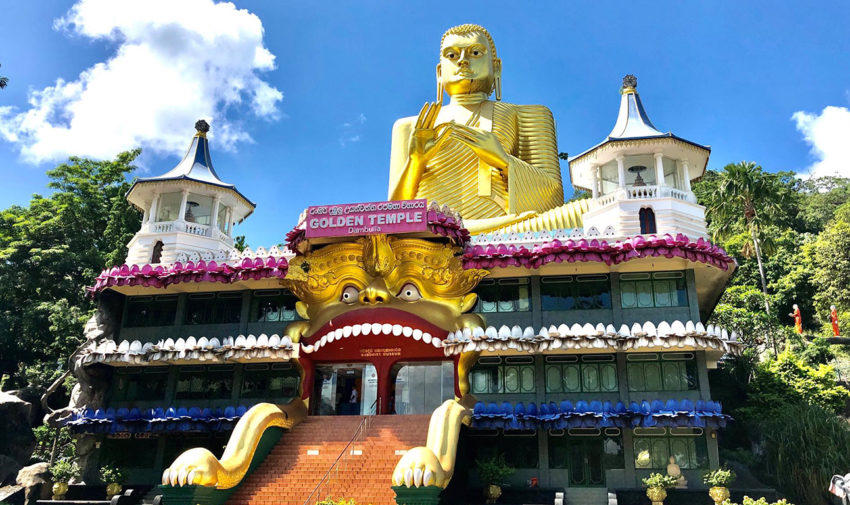A sacred pilgrimage site for 22 centuries, this cave monastery, with its five sanctuaries, is the largest, best-preserved cave-temple complex in Sri Lanka. The Buddhist Mural paintings are of particular importance and presence of more than 150 statues make it important Buddhist temple still being used by monks.
There are five caves (shrine rooms) in Dambulla Temple. All of these caves are full of statues of Buddha and various personages of the Buddhist Order or History. There are 150 Buddha images in these caves. Cave No. 5 (the last in order) has no historical value as it was done in the second decade of this century. All of the other caves contain statues and paintings representing various epochs of Sinhalese sculpture and painting.
The visitor to the Temple of Dambulla through the gateway first comes across Cave No. l, called Dev-Raja-viharaya (temple of the King of Gods). It is believed that this cave is so called, because the God Sakka (King of Gods) gave the finishing touches to the principal image of this cave. This image, depicting the Parinibbana (the last moment) of the Buddha. It is in the typical style and is about forty seven feet in length.
 In the Cave No.2 called Maha Raja Viharya, the whole of the interior whether rock or wall, is painted with brilliant colors of which yellow predominates. The ceiling nearest the entrance is used mostly to depict the life of the Buddha, before and after his Enlightenment. In this part the artist has also attempted to paint the earlier births of the Buddha.
In the Cave No.2 called Maha Raja Viharya, the whole of the interior whether rock or wall, is painted with brilliant colors of which yellow predominates. The ceiling nearest the entrance is used mostly to depict the life of the Buddha, before and after his Enlightenment. In this part the artist has also attempted to paint the earlier births of the Buddha.
The early paintings of Dambulla belong to the 8th century. Tradition also has it that the five seated Buddha images including the principal one in Cave. No.4 of Dambulla temple were made of natural rock in the reign of Vattagamani Abhaya. It is also believed that some of the images in Cave No. 2 and the principal images in cave No. 1 were made during the reign of this king. An another King Nissankamalla’s spent lavishly on the cave temple and set up seventy statues of the Buddha. Through inscriptions we find that he gave this cave the name Suvarnagiri – guha ‘the golden rock cave.’ The cave shrines underwent several renovation programmes under various kings before assuming their present interior forms in the 18th century.
Must Read:Wuhan : City of Four Buddhist Temples

Inhabited by Forest-dwelling Buddhist monks since the 3rd century BCE, these natural caves have been transformed continuously throughout the historical period into one of the largest and most outstanding Buddhist complexes in the Southern and South Eastern Asian region. This Cave Temple showcase innovative approaches to interior layout and decoration.









